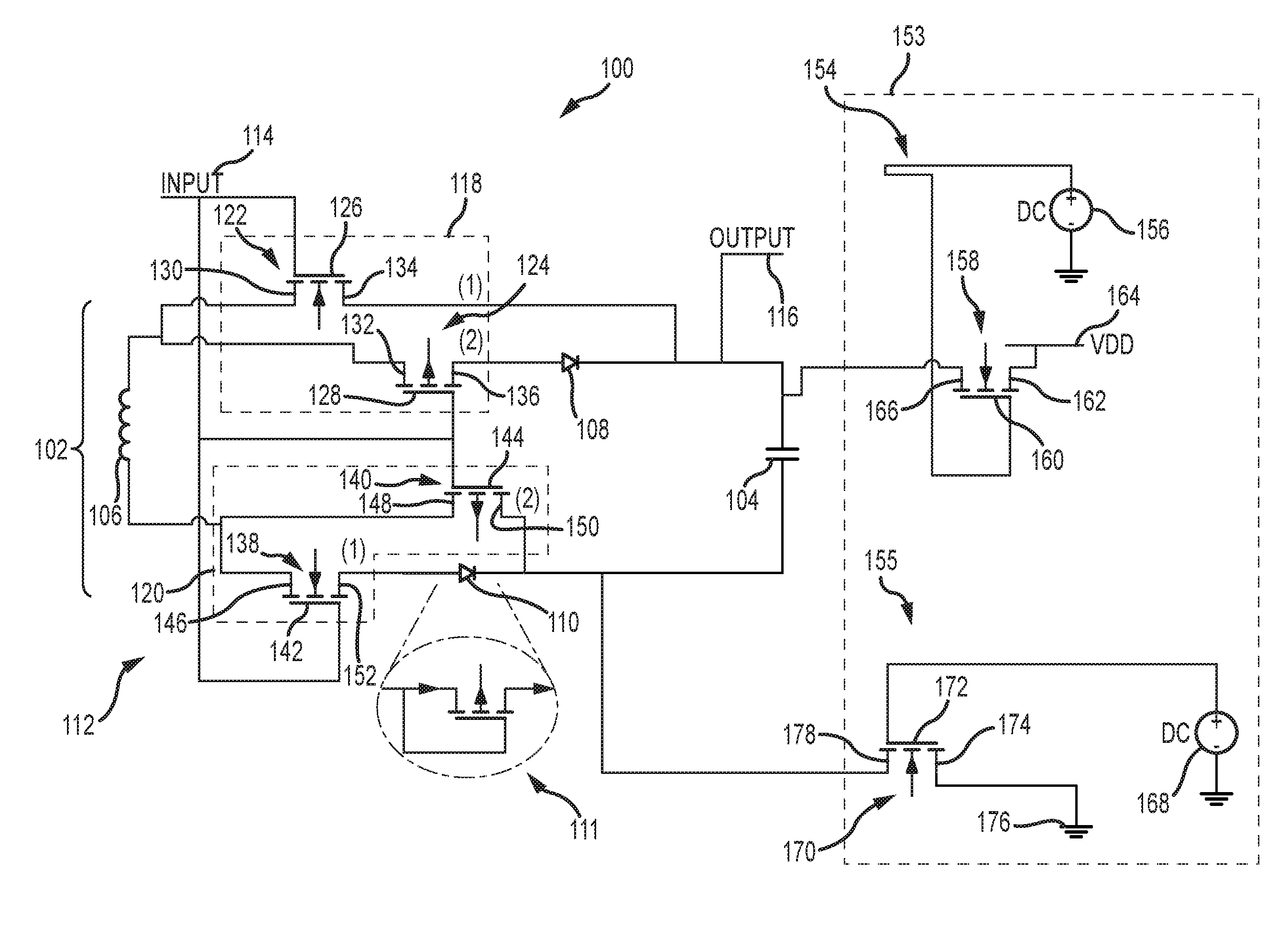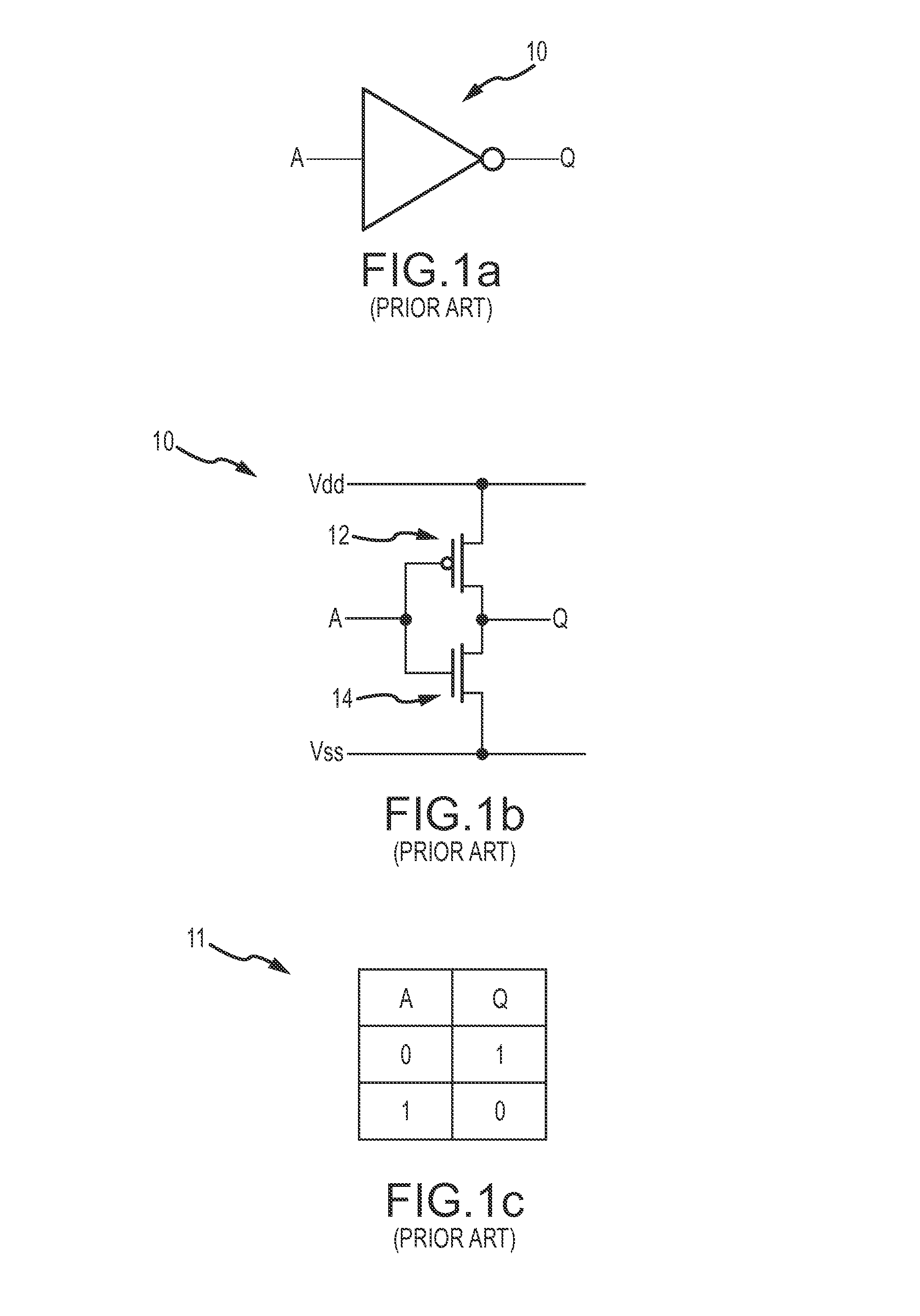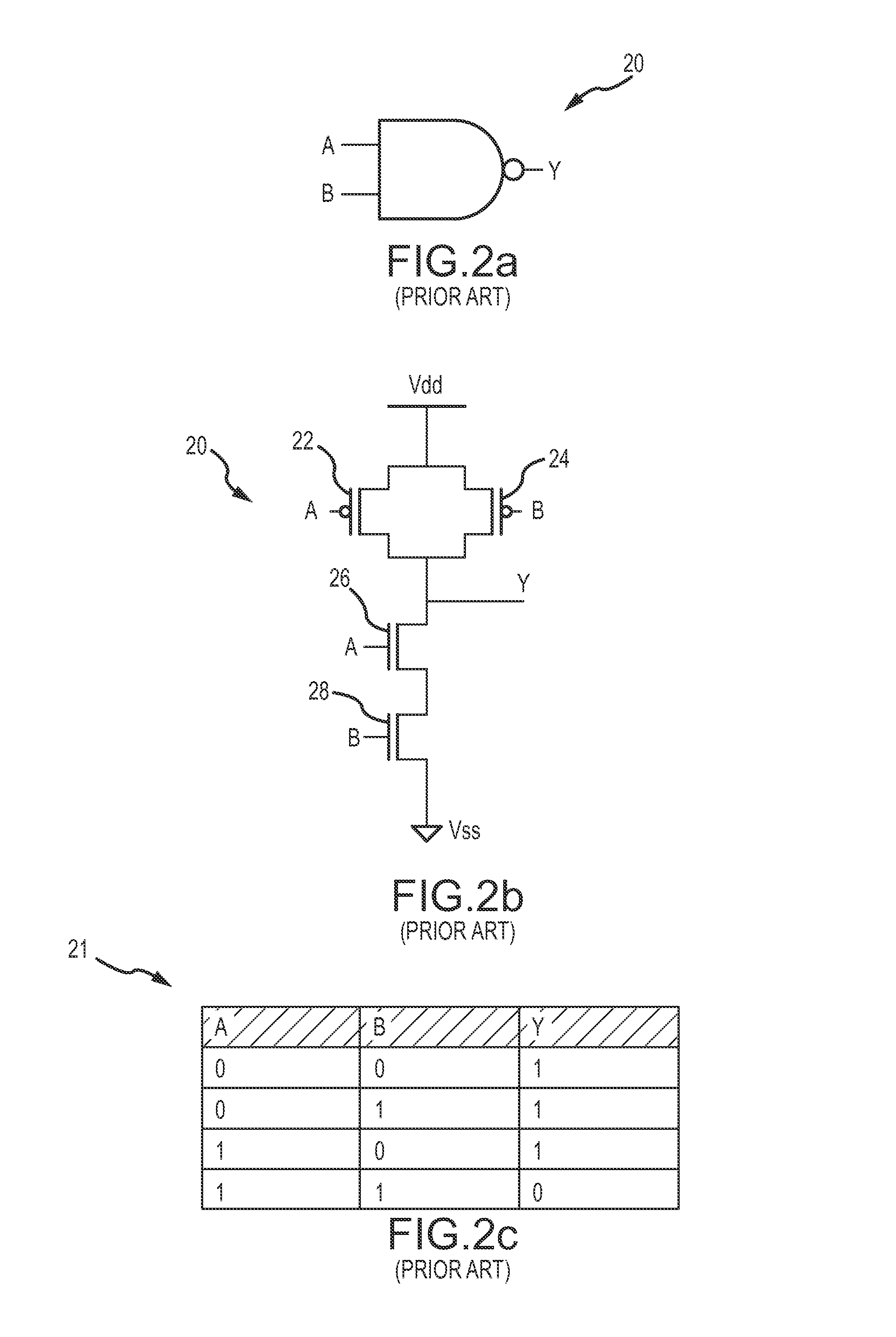Low-power digital logic using a Boolean logic switched inductor-capacitor (SLC) circuit
a low-power, digital logic technology, applied in logic circuits, logic circuits characterised by logic functions, pulse techniques, etc., can solve the problems of sacrificing switching speed, allowing quadratic power reduction, and reducing storage energy, so as to prevent oscillation, reduce leakage, and reduce the effect of stored energy
- Summary
- Abstract
- Description
- Claims
- Application Information
AI Technical Summary
Benefits of technology
Problems solved by technology
Method used
Image
Examples
Embodiment Construction
[0028]A goal of a low-power architecture for digital logic is to exhibit the same logic and voltage level behavior as the standard digital logic. The exact same logic inputs and logical outputs should characterize the low-power digital logic. Moreover, similar voltage levels should be created at the logical output. To achieve lower power, the architecture may have different internal physical characteristics and switching speeds.
[0029]Starzyk's low power logic circuit design scheme based on a SLC circuit does not exhibit the same logical behavior as standard CMOS gates. Specifically, two control signals CS1 and CS2 are used to control four switches. The use of two control signals CS1 and CS2 and the manner in which they are used is not consistent with standard input logic.
[0030]The present invention provides low-power digital logic that exhibits the same logic and voltage level behavior as standard digital logic. The low-power digital logic uses a logic switch and a pair of unidirect...
PUM
 Login to View More
Login to View More Abstract
Description
Claims
Application Information
 Login to View More
Login to View More - R&D
- Intellectual Property
- Life Sciences
- Materials
- Tech Scout
- Unparalleled Data Quality
- Higher Quality Content
- 60% Fewer Hallucinations
Browse by: Latest US Patents, China's latest patents, Technical Efficacy Thesaurus, Application Domain, Technology Topic, Popular Technical Reports.
© 2025 PatSnap. All rights reserved.Legal|Privacy policy|Modern Slavery Act Transparency Statement|Sitemap|About US| Contact US: help@patsnap.com



